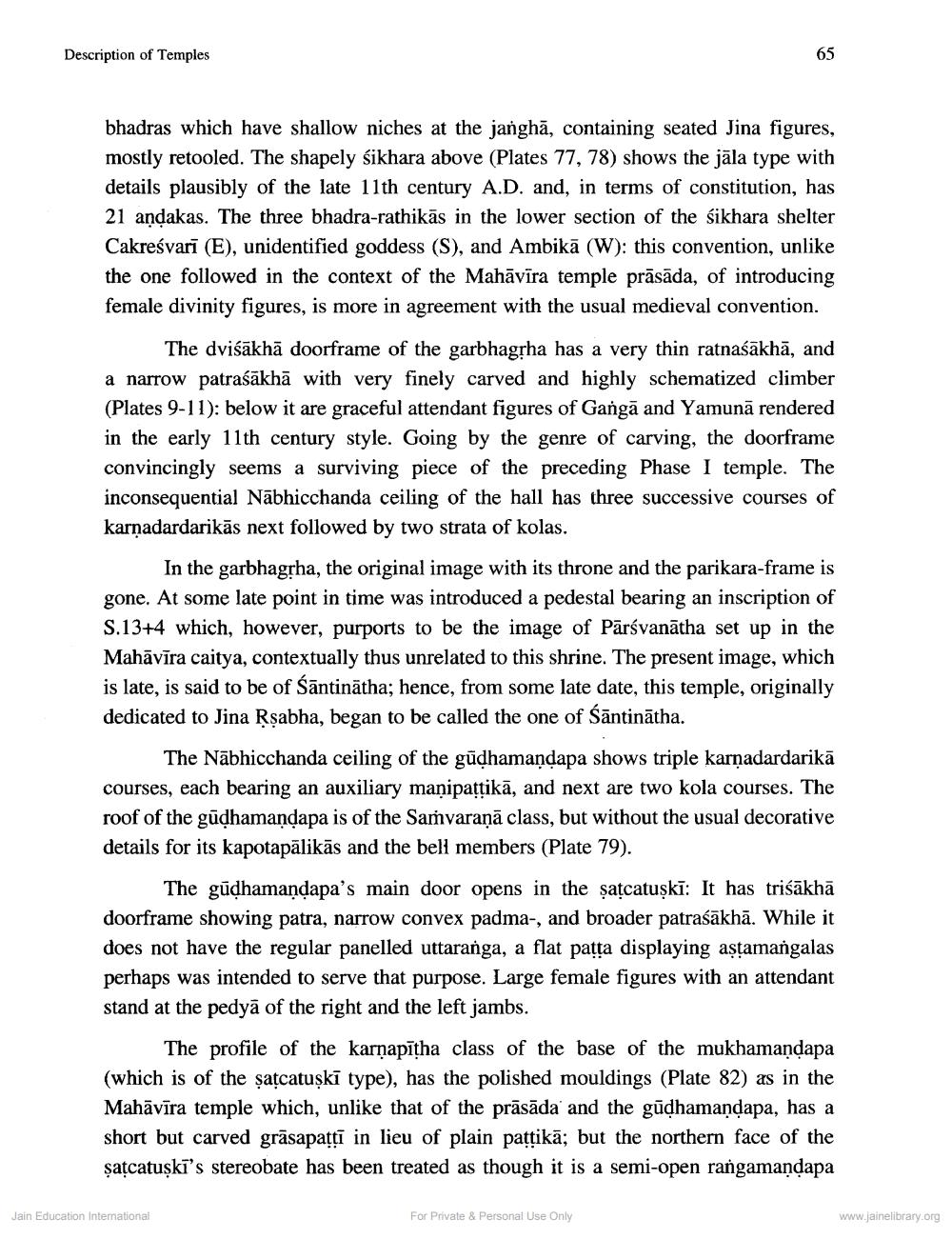________________
Description of Temples
bhadras which have shallow niches at the janghā, containing seated Jina figures, mostly retooled. The shapely sikhara above (Plates 77, 78) shows the jāla type with details plausibly of the late 19th century A.D. and, in terms of constitution, has 21 andakas. The three bhadra-rathikās in the lower section of the sikhara shelter Cakreśvarī (E), unidentified goddess (S), and Ambikā (W): this convention, unlike the one followed in the context of the Mahāvīra temple prāsāda, of introducing female divinity figures, is more in agreement with the usual medieval convention.
The dviśākhā doorframe of the garbhagrha has a very thin ratnaśākhā, and a narrow patraśākhā with very finely carved and highly schematized climber (Plates 9-11): below it are graceful attendant figures of Gangā and Yamunā rendered in the early 11th century style. Going by the genre of carving, the doorframe convincingly seems a surviving piece of the preceding Phase I temple. The inconsequential Nābhicchanda ceiling of the hall has three successive courses of karnadardarikās next followed by two strata of kolas.
In the garbhagsha, the original image with its throne and the parikara-frame is gone. At some late point in time was introduced a pedestal bearing an inscription of S.13+4 which, however, purports to be the image of Pārsvanātha set up in the Mahāvīra caitya, contextually thus unrelated to this shrine. The present image, which is late, is said to be of śāntinātha; hence, from some late date, this temple, originally dedicated to Jina Rsabha, began to be called the one of Sāntinātha.
The Nābhicchanda ceiling of the gūdhamandapa shows triple karņadardarikā courses, each bearing an auxiliary manipatřikā, and next are two kola courses. The roof of the gūdhamandapa is of the Samvaraņā class, but without the usual decorative details for its kapotapālikās and the bell members (Plate 79).
The gūdhamandapa's main door opens in the satcatuskī: It has triśākhā doorframe showing patra, narrow convex padma-, and broader patraśākhā. While it does not have the regular panelled uttaranga, a flat patta displaying astamangalas perhaps was intended to serve that purpose. Large female figures with an attendant stand at the pedyā of the right and the left jambs.
The profile of the karmapītha class of the base of the mukhamandapa (which is of the satcatuskī type), has the polished mouldings (Plate 82) as in the Mahāvīra temple which, unlike that of the prāsāda and the gūdhamandapa, has a short but carved grāsapattī in lieu of plain pattikā; but the northern face of the şatcatuski's stereobate has been treated as though it is a semi-open rangamandapa
Jain Education International
For Private & Personal Use Only
www.jainelibrary.org




